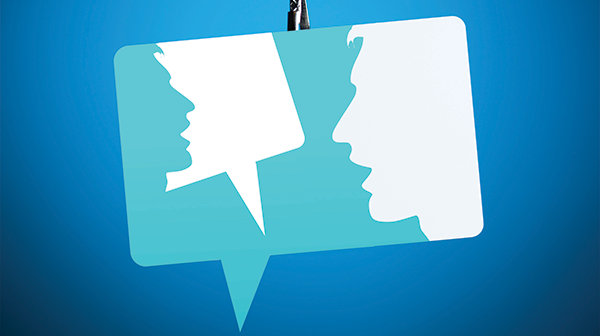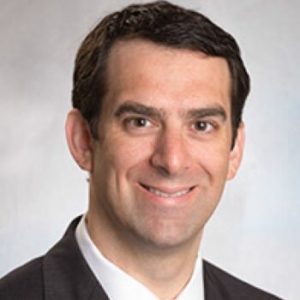
One of the best reasons to be an emergency medicine provider on Twitter is to easily keep up with what’s happening at top conferences all around the world in real time. March and April 2014 were incredibly active, with tons of live tweeting from several major conferences. This month, I’ll run through highlights from five of the top EM-related conferences. Sure, reading the tweets tagged with these hashtags on Twitter is not quite as good as attending the conferences in person, but it’s amazing how much we can glean from these tweets, and they just might inspire you to go in person in the future. So on behalf of the tens of thousands of people who benefited from these tweets, I’d like to thank my fellow live-tweeters! If you want to know which conferences are coming up, check out Symplur’s health care hashtags page (www.symplur.com/healthcare-hashtags). It lets you know what conferences are coming down the pike and which hashtags to search for on Twitter. In a future column, I’ll give tips and links to resources that can help you become an effective conference live-tweeter.
Explore This Issue
ACEP Now: Vol 33 – No 05 – May 20141. Only in its second year, the Social Media and Critical Care (SMACC) conference (this year held in Gold Coast Australia, thus #smaccgold) attracted 1,300 attendees but created millions of impressions on Twitter. (Disclaimer: I was an unpaid lecturer about how EM providers can best use social media.) While its name makes it sound like a conference about social media, it is actually a conference of cutting-edge critical care junkies who happen to use social media to help spread new ideas like wildfire. Scott Weingart, MD, has called SMACC “the best critical care conference…ever.” Unsurprisingly, the number of tweets tagged #smaccgold was in excess of 28,000 during March alone. These were high-yield clinical pearls, links, and often live debates and conversations about the hottest topics being discussed at the conference, including resuscitation team dynamics, palliative care, and stress-inoculation training for residents. Here are some highlights. From UK-based EM physician Richard Body, MBChB (@richardbody): “I love this simple pearl from Victoria Brazil (@SocraticEM): Door-to-balloon times for STEMI halved by building relationships with the Cath Lab. #SmaccGOLD.” From REBEL-EM blog creator Salim Rezaie, MD (@srrezaie), “Palliation of dyspnea in advanced COPD: revisiting a role for opioids, http://t.co/zIIasrju7d #FOAMed #smaccgold” links to a BMJ article on this ever-changing topic. For stress inoculation in residency training, to whom else can we turn other than my own attending, Dr. Weingart (@emcrit)? He tweeted, “If my residents don’t feel like they are being shot at, I have failed.” Mission accomplished.
2. Resuscitation is an annual conference focusing on critical care and trauma. Held in Las Vegas, the #resus14 organizers recruited their own official (unpaid) social media team (yes, I was a member) for the sole purpose of pumping out high-yield tweets—and perhaps attracting more attendees next year. One hot topic presented by trauma surgeon Kenji Inaba, MD, was—say it with me—resuscitative endovascular balloon occlusion of the aorta (REBOA). From Texas-based ED attending and trailblazing EM blogger Allen Roberts, MD (@GruntDoc), comes: “Inaba #resus14: REBOA trials are ongoing, not even close to standard of care. Potentially life saving for rural trauma transfers?” The idea of REBOA is to buy time during a transfer or before the OR is ready to save an unstable hemorrhagic patient. The procedure seems to have great promise. It may not yet be ready for prime time in the ED setting, but in the meantime, here’s a nice link to a 2011 Journal of Trauma article with good information on this new procedure that may go mainstream before long: http://www.ncbi.nlm.nih.gov/pubmed/22182896.
3. Need a reminder as to why we need great medical educators? Conemaugh Memorial Medical Center Associate Program Director Rob Cooney, MD, MEd (@EMEducation), relays this excellent quotation from #CORD14 (the Council of Emergency Medicine Residency Directors Academic Assembly): “A poor surgeon hurts one patient at a time. A poor educator hurts 250 each time—Ernest Boyer.” CORD increasingly focuses not just on what to teach but on how to teach, especially in the #FOAMed era in which an engaging delivery trumps almost anything else. Also from Dr. Cooney is a link to a list of emergency #MedEd graduate degree programs: “Interested in an advanced education degree? Check out http://www.faimer.org/resources/mastersmeded.html #CORD14.”
4. Rounding out my tour-de-conferences are two non-EM conferences with substantial EM participation. From the American Institute of Ultrasound in Medicine (#AIUM14), EM attending and ultrasound fellow Lydia Marie Sahlani, MD (@LydMD), relays this from a talk delivered by ultrasound luminary Richard Hoppmann, MD: “Pub med trends: ‘ultrasound education’ 227 articles to 651 from 2002-2012. Go with the current. Ultrasound hits all major areas. -Hoppmann #AIUM14.” Dr. Hoppmann’s point is a great one: ultrasound research has exploded in the past decade, but the landscape is still changing.
5. Lastly, from the American College of Medical Toxicologists (#ACMT2014), the very well-published Canadian internal medicine toxicologist David Juurlink, MD, PhD (@DavidJuurlink), tweeted about an interesting abstract from this conference (also published online) on anticholinergic toxicity treatment patterns in a toxicology registry: “Very surprised toxicologists are using physostigmine so rarely and benzodiazepines so often. http://bit.ly/1dFQQ5X #ACMT2014.” Indeed only 13 percent of patients in the registry cited received physostigmine alone. Another 9 percent received physostigmine and a benzodiazepine, while 32 percent received benzos as monotherapy. The kicker is that Dave (“only my mother calls me Dr. Juurlink”) didn’t even attend #ACMT2014 in person! He just followed links from Twitter and tweeted from home. How eco-friendly.
Do you have any favorite tweets that ACEP Now readers should know about via The Feed?
Tweet at me @JeremyFaust or email to jsfaust@gmail.com.
 Dr. Faust is an emergency-medicine resident at Mount Sinai Hospital in New York and Elmhurst Hospital Center in Queens. He tweets about #FOAMed and classical music @jeremyfaust.
Dr. Faust is an emergency-medicine resident at Mount Sinai Hospital in New York and Elmhurst Hospital Center in Queens. He tweets about #FOAMed and classical music @jeremyfaust.
Pages: 1 2 3 | Multi-Page





No Responses to “Tweets from Emergency Medicine-related Conferences Relay Latest Research About Social Media and Critical Care, Resuscitation Procedures, Ultrasounds, and Toxicology”